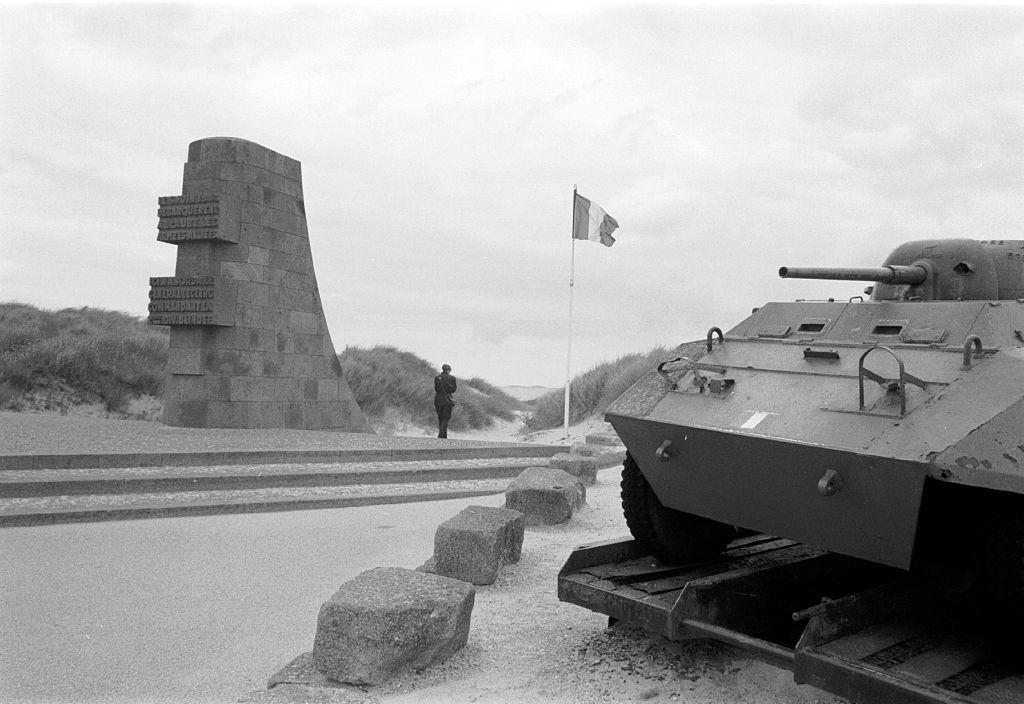

The Germans on the beaches of Normandy had a not-so-secret goal for when the invasion came. They wanted to throw the Allies back into the sea. All the troops, static defenses, limited shore artillery, and multiple panzer divisions had this purpose. They sought to limit who made it ashore, kill those who did, and shove all the dead, the dying, and the equipment into the English Channel. So where were the panzers in Normandy on D-Day?
They were ill-led, lacked timely orders, and most never saw the sands of France again. But one panzer unit did make it to the coast. So how did a panzer unit make it to the beach, but the Allies still held the whole stretch at day’s end? Well, the panzers ran into a much bigger problem, tried to flee, and had a really bad day.
The little panzer unit that could
First, it’s important to note that the 21st Panzer Division faced D-Day at one of the worst possible points in time, administratively. The 47th Panzer Corps had halfway taken over command, but not yet entirely. The division reported to the corps, to Panzer Group West, to Army Group B, and to Hitler, all through different avenues.
And Field Marshall Erwin Rommel, one of the few decisive leaders that could send the 21st into combat on his own authority, was absent. And so the 21st spent hours standing next to warmed-up tanks and other vehicles, waiting for final orders to advance. After the delay, they got orders to hit British paratroopers at the River Orne and bridges over it.
It took hours for the corps and then division to re-draw attack plans. By the time the 21st advanced toward the bridges, it had a new set of orders.

Now, the panzers were headed to Normandy beaches. Around noon on D-Day, the unit received orders to attack Sword Beach, instead. And, critically, it was sent around British paratroopers to reach the beach. And so a tank division pulled away from the tiny force of paratroopers defending the bridge, drove through a chokepoint and clogged roads, and re-deployed against Sword Beach. It could have tried to advance across the bridges, re-capturing them and reaching the beach more quickly. But it followed its orders, instead.
Panzers in Normandy attack Sword Beach
And so the division repositioned, rallied up, and attacked against Sword Beach. Commandos led the way, mapping openings in the lines, as armored vehicles barreled in. And the panzer counterattack reached the Normandy beaches.
The Germans caught the British nearly flat-footed. British forces attempting to fight inland struggled with clogged roads and other hazards.
But Britain had a good reason for not preparing as doggedly as it could have for a counterattack.
The panzers on the beach certainly had the greatest armor and firepower of assets on the beach. But they had a huge problem: The Brits had naval artillery right offshore and air support overhead.
And that’s why the panzer counterattack on June 6 ended up being short-lived and low-impact. As the panzers quickly broke through to the beach, naval artillery got a good look at the enemy. For the first time all day, the big guns right on the water had a juicy, high-priority, easy-to-kill target in their sites.

Naval artillery rarely gets to conduct “direct fire” missions where gunners can see the enemy, see their rounds impact, and adjust their own fire. When 21st made it onto the beach, it was a perfect target. And the British units nearby could obviously pivot and lob anti-armor weapons. And the planes overhead might find a chance to strike the panzers, as well.
Panzers on the Normandy beaches suddenly didn’t seem so great.
So the 21st fired off a few rounds and decided to get out while the getting was good. Some of its forces suffered a quick pummeling during the withdrawal, but most made it back inland with tails between legs.
And, of course, the Germans never made it back to the beaches. The Allied advance churned slowly eastward, liberating France and then occupying Germany.
